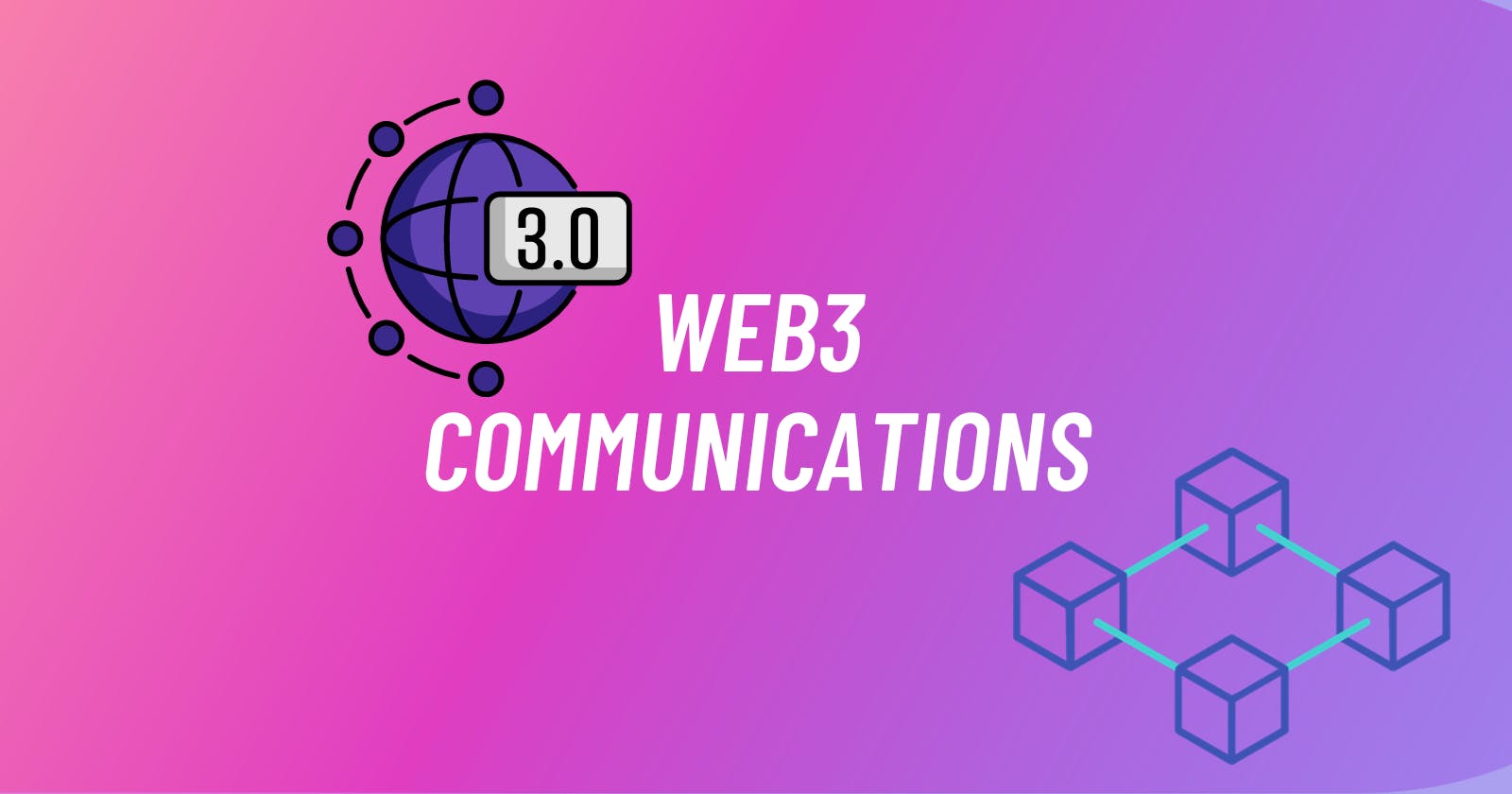Abstract
Web3 communication is transforming the way we connect in the digital age. This research article provides a thorough exploration of the rapidly evolving Web3 communication sector, highlighting key players, the role of the Push Protocol, and the dynamics influencing user preferences. We delve into the history of Web3 communication, its current state, and prospects, offering insights into its impact on privacy, data ownership, and decentralization.
Introduction
The digital communication landscape is undergoing a profound transformation driven by the increasing interconnectedness of our world. In response to the limitations and vulnerabilities of traditional centralized communication systems, a new paradigm known as Web3 communication networks has emerged. Web3 communication networks are built on principles that prioritize security, privacy, and decentralization, and they are reshaping the way we interact online. This research article aims to provide a comprehensive understanding of the evolving realm of Web3 communication. It emphasizes key contributors, and it focuses on the emergence of the Push Protocol, which is at the forefront of this transformative journey. These networks offer increased privacy, censorship resistance, and greater transparency, ushering in a new era of digital interaction that puts the user at the centre.
Players in the Spotlight
The Web3 communication ecosystem is a dynamic and diverse landscape shaped by a multitude of contributors. These contributors include various technologies and networks that play pivotal roles in redefining how we communicate digitally. Among these, blockchain networks, decentralized networking stacks, peer-to-peer technology, distributed hash tables (DHTs), and mesh networks stand out as the building blocks of Web3 communication.
One of the notable developments in this ecosystem is the libp2p networking stack. Libp2p is a modular peer-to-peer networking solution that has gained widespread adoption across prominent blockchain platforms, including Ethereum, Polygon, Polkadot, and Mina. Its modular nature provides flexibility and versatility, setting the stage for innovative decentralized communication methods. Libp2p has emerged as a linchpin in advancing the goals of Web3 communication.
The Push Protocol Context

In recent times, the emergence of the Push Protocol has altered the very fabric of information dissemination and consumption within the Web3 communication ecosystem. Unlike the traditional Web2 communication model that heavily relies on centralized servers to push information to users, the Push Protocol introduces a paradigm shift. This innovative protocol empowers users by providing them with unprecedented control over their data and information flow. The Push Protocol operates in a decentralized manner, aligning with the core principles of Web3 communication.
In a Web3 context, the Push Protocol signifies a monumental shift toward user-centric, censorship-resistant, and secure information delivery. It puts users in charge, ensuring they can access content without intermediaries having undue control. This marks a significant departure from the centralized gatekeepers that have traditionally dictated the flow of information.
Dynamics of Choice
The preferences and choices that shape the Web3 communication sector are driven by several influential factors, all of which are anchored in the sector's core principles:
Increased Privacy: Web3 communication networks are designed with privacy as a paramount consideration. They minimize data exposure, making privacy breaches less likely.
Lower Latency: By facilitating direct peer-to-peer communication, decentralized networks reduce data travel distances, resulting in lower latency and faster response times.
Reduced Reliance on Central Servers: The distribution of data across a network of nodes mitigates dependence on centralized servers, reducing the vulnerabilities associated with centralization.
Fault Tolerance: Decentralized networks, particularly mesh networks, exhibit inherent fault tolerance. They can adapt to network failures, ensuring continuous and reliable communication.
Security: Security is at the core of Web3 communication. Features like end-to-end encryption, cryptographic signatures, and decentralized storage enhance the security of data transmission.
Transparency and Tamper-Proofing: Web3 communication is synonymous with transparency and tamper-proof channels. Users can independently verify the integrity of their communication.
Resilience and Scalability: Decentralized networks are designed to be highly resilient and scalable, accommodating a growing user base while maintaining performance.
Synthesis
Web3 communication is poised to transform how individuals connect and interact in the digital realm. By emphasizing decentralization, privacy, and security, Web3 networks are offering users greater autonomy over their online interactions. The emergence of the Push Protocol within this ecosystem represents a significant leap forward in the way information is distributed and accessed. Unlike traditional models that rely on centralized intermediaries, the Push Protocol empowers users by giving them control over the content they receive.
Web3 communication marks a fundamental shift in how information is disseminated and consumed. It mitigates the risks associated with centralized models, providing increased security, privacy, and a more transparent and resilient digital environment. The advent of the Push Protocol adds a new dimension to this landscape, fostering a more user-centric and censorship-resistant approach to information sharing.
Reference Check
While this article provides an overview of the Web3 communication landscape, in-depth research and specific citations from industry experts and publications are indispensable for a comprehensive understanding of the subject. To gain a deeper understanding of the emerging Push Protocol and its impact on Web3 communication networks, a detailed analysis of its technical aspects, implementation, and implications is warranted.
Conclusion
In conclusion, Web3 communication networks are at the forefront of transforming digital communication. These networks mitigate the risks associated with centralized models, providing increased security, privacy, and fostering a more transparent and resilient digital environment. The emergence of the Push Protocol and other innovations signify a brighter future for digital communication, emphasizing user control and privacy. Further research and analysis are required to fully comprehend the evolving dynamics of this revolutionary landscape. Web3 communication holds the potential to redefine the digital communication landscape, putting users at the center of the experience and fundamentally changing how we interact online.
